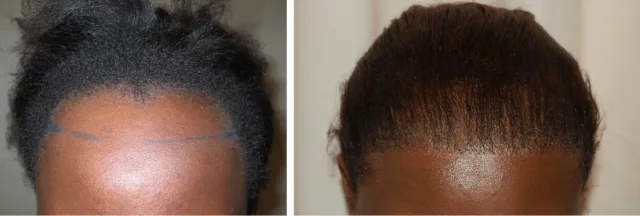What causes sensitive teeth?
To understand why some of us face this issue we should take a closer look at the tooth structure. This consists of the enamel, which is the protective outer layer of the “visible” part of our teeth and the cementum which protects the root under the gum line. Once these layers are gone, the underlying dentine becomes exposed. It contains tiny channels filled with fluid which are connected to the nerve tissues inside the tooth. These channels allow typically cold, hot, or sweet beverages, additionally with food to stimulate the nerve inside. The result is a brief sharp pain that lets us hesitate before eating or drinking some cold or hot foods or drinks.
If you brush your teeth with too much force or incorrectly, you may damage your gum. That leads to gum recession which leaves your root surface exposed. The cementum covering the surface of the root can easily be removed by applying too much force while brushing. Abrasive toothpaste, excessive consumption of acidic drinks, or sometimes, when you grind your teeth unconsciously over the years, it can cause the enamel to wear out over time.
It is important to rule out more severe issues such as periodontal diseases (an infection of the tooth-supporting tissues like bone and gum) or tooth decay as the cause of your sensitivity. Regular dental checkups are essential to detect them in an early stage.
What treatments or remedies can we do for sensitive teeth?
Fortunately, we can treat sensitive teeth in most cases using methods where the discomfort disappears or in a way where we have at least a significant improvement of the symptoms. Depending on the cause, your dentist may suggest the use of desensitizing toothpaste. This is usually the best place to start. They contain mainly agents such as potassium salt or sodium fluoride to bring improvements. These contents help block sensation traveling from the tooth surface to the nerve. If this measurement doesn’t ease your symptoms, your dentist may recommend the application of a special desensitizing varnish, gel or even a filling to cover the exposed dentine. Nowadays, there are other solutions like the P®ST (Pinhole Surgical Technique) to cover the exposed root dentin with the patients’ own gum which receded. This is definitely a win-win situation as you get your gum back to its natural place and you don’t have the sensitivity anymore.
Is it possible to prevent sensitive teeth and how?
In fact, once the protective layers are gone, they are gone forever. The best way to deal with the main causes is to inform patients about them and to create an awareness on how to prevent:
- Tooth-brushing advise to avoid excessive mechanical brushing and abrasive toothpaste.
- Informing the patient about the effect of regular consumption of acidic food and beverages on their tooth tissue
If you suffer from toothache or sensitivity, make sure to let your dentist know and book your dental check-up with one of our expert professionals. Keep smiling!




